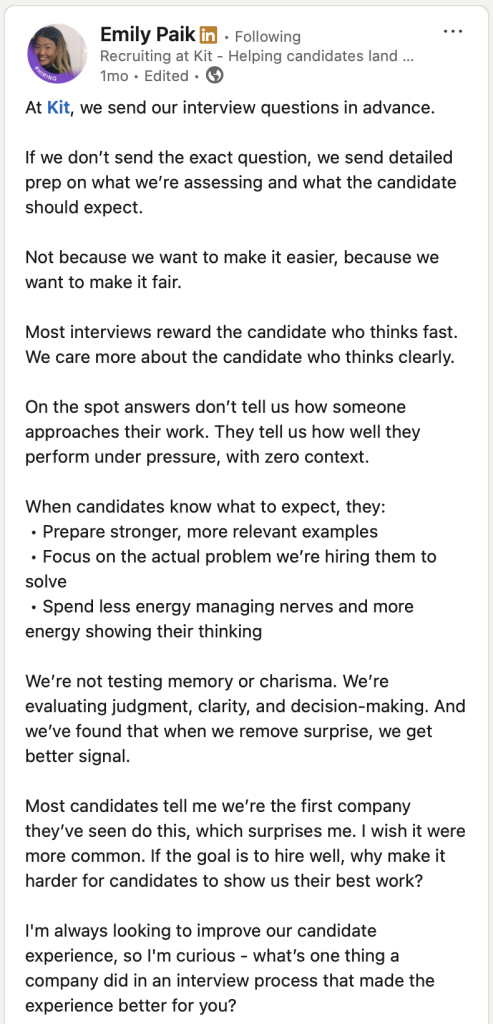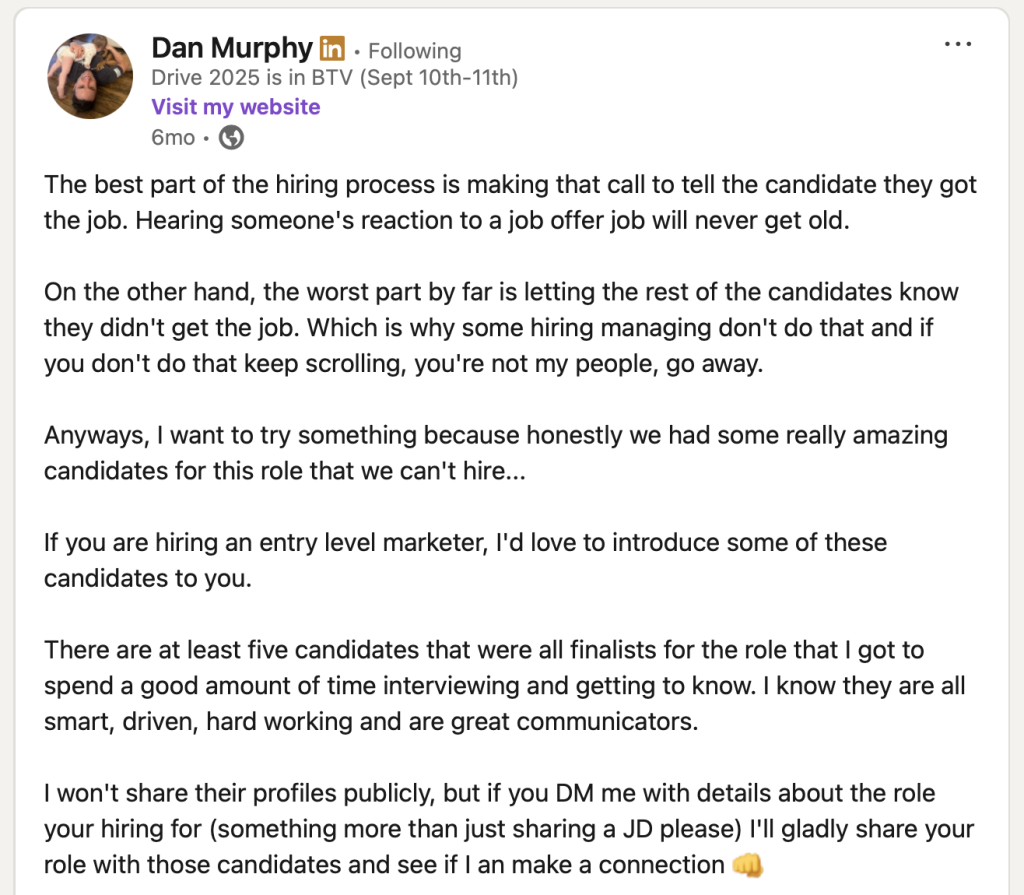
Subscribe for updates
Get talent acquisition best practices, trends, and news delivered directly to your inbox.
By entering your email, you agree to receive marketing emails from JobScore
A positive candidate experience can set your organization apart so you can attract, engage, and hire the talent your team needs to succeed. While there are certainly many best practices you can follow, seeing them in action can inspire your team to follow suit, guide practical implementation, and help you justify the necessary budget to make it all happen.
Let’s explore some candidate experience examples from companies that are getting it right.
P&G provides transparency around their hiring process
P&G has a comprehensive careers site that outlines their hiring process so their candidates know what to expect. Each stage is explained in detail, including application, assessment, interviews, and offer.
They still recognize, however, that their hiring process may vary by role. They share, “Additional steps or interviewing options may be required for different roles or functions. For example, candidates applying for a P&G Sales role that requires previous experience may be invited to an online virtual job interview which measures many factors, including work style, sales experience, problem-solving, and cognitive ability.”
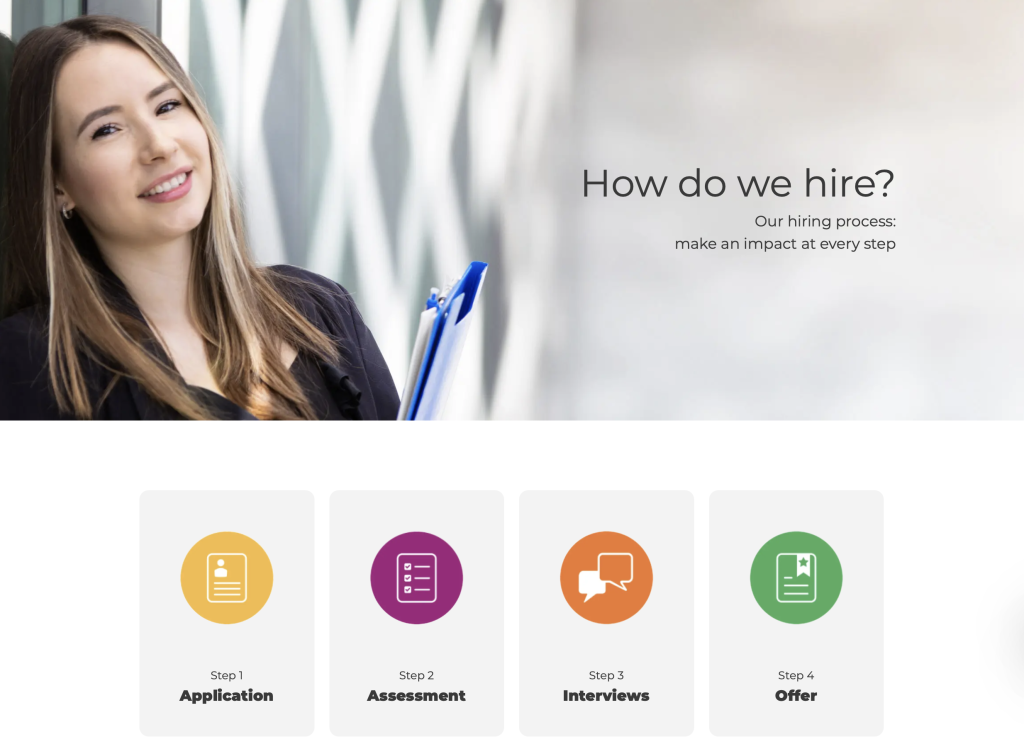
Ericsson sets clear expectations around their AI hiring policies
AI use is becoming increasingly common among job seekers and hiring teams. Ericsson addresses this reality by sharing AI best practices and permitted use for candidates, as well as outlining their own use of AI in the hiring process.
For example, candidates may use AI to practice responding to interview questions, but may not use it to assist in live or recorded interviews. In return, Ericsson shares that they use AI to capture and map candidates’ skills to job requirements, but that they won’t use it to make hiring decisions or automatically reject candidates.
Setting these expectations helps ensure that candidates understand why the policy exists, how they can use it, and the potential consequences of not adhering to it.
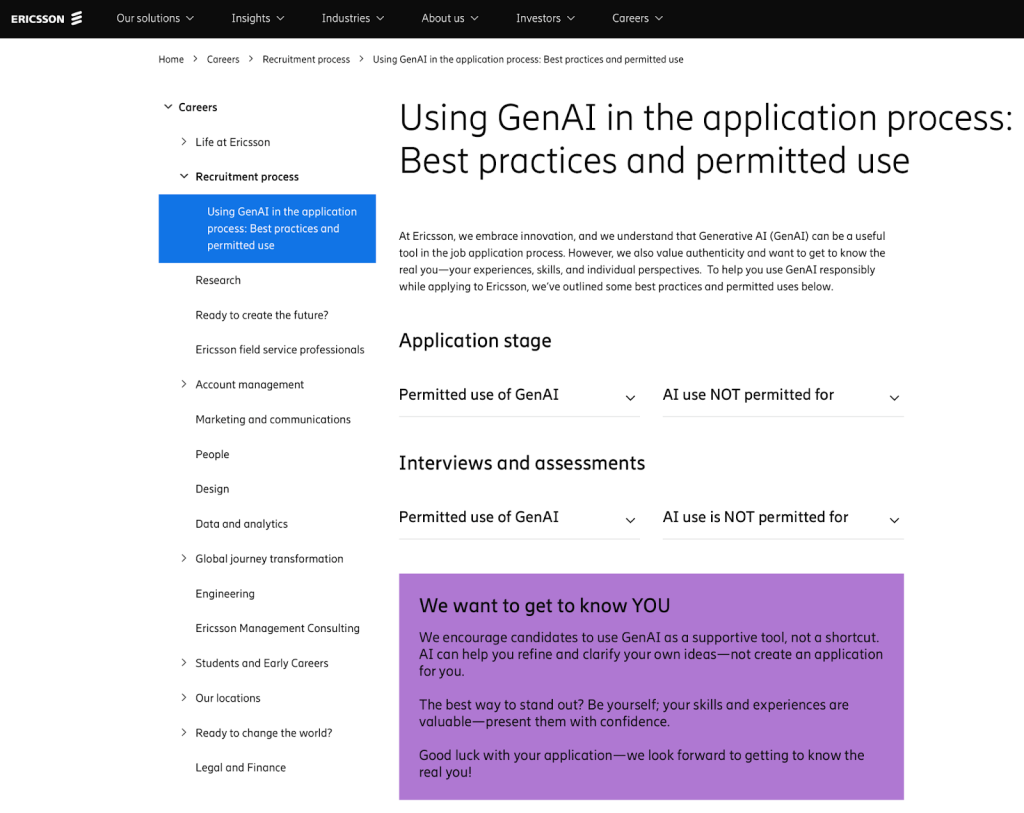
Chipotle uses an AI chatbot to assist candidates
Many candidates (39%) say careers sites are their most valuable research channel. In addition to finding job opportunities, candidates use careers sites to learn about the company and decide whether it’s a place they’d want to work.
Chipotle uses an AI chatbot on their careers site to help job seekers search and apply for open roles, as well as to find information about benefits, development opportunities, and culture, among other things. This helps ensure that candidates have all the information they need before applying or accepting a job offer.
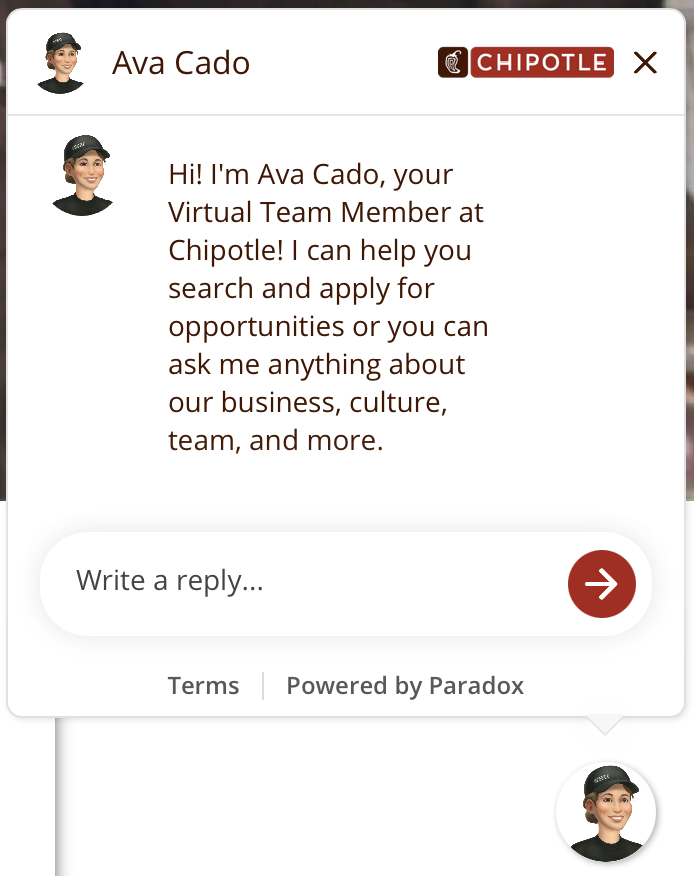
Walmart reconsiders degree requirements to eliminate unnecessary barriers
College degrees are often listed as job requirements, even when they aren’t absolutely necessary. Walmart updated some job descriptions to allow applicants to have a related college degree or equivalent work experience.
For example, a visual merchandising role requires a “Bachelor’s Degree in Business, Communications, Fine Arts, or related field and 1 years’ experience in merchandising, marketing, operations, or related field OR 3 years’ experience in merchandising, marketing, operations, or related field.”
This skills-based hiring approach removes arbitrary barriers that exclude otherwise qualified candidates, building a more inclusive candidate experience.
Canva explicitly offers interview accommodations
Canva doesn’t just provide interview accommodations, they encourage candidates of all abilities to request adjustments that will set them up for success.
Examples of interview adjustments Canva explicitly offers include:
They share, “We want to empower you to demonstrate your skills in a way that works best for you.”
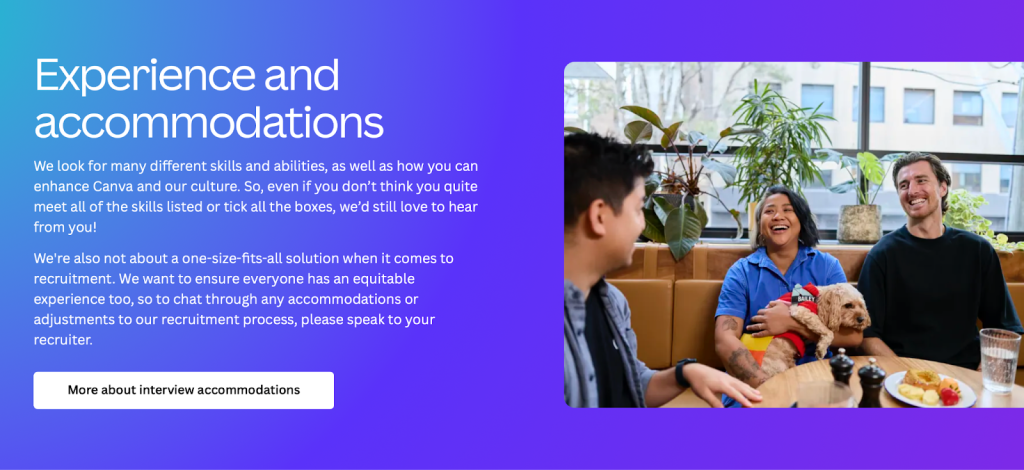
Kit sends interview questions in advance
The interview process is intended to help you find the person who’s most qualified for the role, not the person who interviewed the best. That’s why Kit sends interview questions in advance.
Emily Paik, senior recruiter at Kit, shares, “When candidates know what to expect, they spend less energy managing nerves and more energy showing their thinking.”
Putting candidates at ease so they can demonstrate their skills can lead to a more positive candidate experience while improving hiring outcomes.
GitLab shares their compensation calculator with candidates
Most candidates (61%) prioritize compensation and benefits when considering a new job — but that information isn’t always available to them. In the spirit of transparency, GitLab shares their compensation formula with candidates and gives each applicant access to their compensation calculator during the interview process.
They share, “This means that at the time of hiring, candidates don’t have to blindly negotiate compensation. They simply need to enter the individual inputs on the Compensation Calculator and it comes up with a band consistent with the individual’s circumstance — where they live, level, currency, etc.”
Merit America sent a ‘no update’ update
Candidates are eager to hear back from your organization at every stage of the hiring process. Letting candidates know when there’s been delay can go a long way in building a positive candidate experience.
Katie Rakusin, senior director of talent acquisition at Merit America, explains, “No one expects an immediate yes or no — they just don’t want to be ghosted. A ‘no update’ update is better than radio silence.” She continues, “Sometimes, the smallest gesture makes the biggest difference and really impacts the candidate experience.”
Zapier provides interview feedback to rejected candidates
Most candidates (83%) want to know as soon as possible when they’re no longer being considered for a job, but 40% have been ghosted after a second- or third-round interview. Zapier strives to stand out by offering feedback to every candidate who interviews with them.
Bonnie Dilber, recruiting leader at Zapier, shares, “We do not have the capacity to provide feedback to candidates at the application stage, but if someone interviews with a member of our team, they are going to receive some form of feedback.” Bonnie continues, “At earlier stages, this is a going to be via email. At later stages, we offer an option to set up time for live feedback.”
Interview feedback is a great way to help candidates feel valued — and consider future opportunities at your organization.
Exit Five helped finalists network
Most of the candidates you consider for a role won’t be hired — even if they’re highly qualified. Dan Murphey, chief operating officer at Exit Five, ran into this conundrum when hiring for an entry-level marketer. His solution? Offer to introduce the rejected finalists to people in his network.
Dan published a LinkedIn post asking those in his network to DM role details so he could help make connections.
This approach is a fantastic way to end the candidate experience on a positive note.
Final thoughts on these candidate experience examples
There are so many ways to improve your candidate experience. Keep learning from your peers, maintain a running list of ideas, and implement new initiatives as you’re able.
Some candidate experience improvements will be relatively simple, like sending a bulk email to notify your candidates of a delay. Others are more involved, like adding a chatbot to your careers site. Do what works for your organization and remember that any change can help elevate job seeker perceptions and improve hiring outcomes.
JobScore can help you elevate your candidate experience through engaging careers sites, candidate communication templates, and streamlined interview feedback. Start your free to trial to see it in action.

